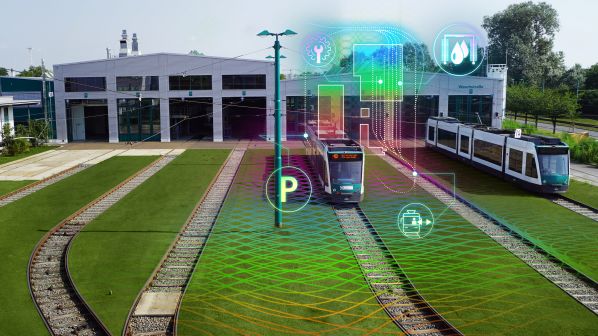The other members of the consortium are Karlsruhe Institute of Technology (KIT), Germany’s Institute for Climate Protection, Energy and Mobility (IKEM), Codewerk, and Mapillary. The project is being funded by Germany’s Federal Ministry for Transport and Digital Infrastructure (BMVI) as part of its Modernity Fund research initiative.
The project will be carried out at ViP’s tram depot in Potsdam with the objective of developing a digital depot based on the operation of autonomous trams. Autonomous trials with a converted Siemens Combino LRV owned by ViP started last year on a 6km section of the Potsdam network and were extended to 13km earlier this year.
“The project’s technical feasibility will be demonstrated with autonomous service operation in the depot, such as running trams through a washing bay onto a siding,” Siemens explains.
Siemens says depot automation will be made commercially viable over the medium term as the first stage of autonomous tram operation. Astrid will consider the legal conditions necessary for the approval and operation of autonomous trams and the economic case for autonomous operation.
Siemens will develop the autonomous tram in the depot, and the tram’s integration into the data and system landscape via a data hub provided by Codewerk and localised and tracked using a Mapillary digital map. Codewerk will develop cloud and edge components for integrating the data of all systems and Mapillary will provide a cloud-based online platform for the collection and provision of street images. The data will be analysed with Artificial Intelligence and processed to provide digital maps.
ViP will provide the tram and depot infrastructure as well as access to data, systems and facilities, and evaluate the results as the depot operator. KIT will assist in the specification and digitalisation of the depot, automation of processes, and identification of necessary data, while IKEM will analyse and assess the legal and economic issues.
Milestone
“Astrid is the next big milestone on the way to autonomous trams” says Ms Sabrina Soussan, CEO of Siemens Mobility. “By automating time-consuming shunting operations in the depot, we want to better support our customers in ensuring sustainable value creation over the entire lifecycle as well as guaranteeing availability.”
“The fact that the driver is absent as a reference point for behavioural requirements, responsibility and liability presents major legal challenges and, specifically, challenges to operation approval,” says Mr Matthias Hartwig, mobility team leader with IKEM. “For commercial use scenarios, calculating costs and planning deployment, on the other hand, you can’t simply assume that only the driver is eliminated as a cost position. Other functions in the system will have greater importance, and the new technology must also be considered as a factor in operations and costs. There will in fact be a completely new operator model for the depot, and the project will develop this model and, as far as possible, support it with cost estimates.”
“We will be checking to see whether and how time-consuming shunting operations in a depot can be fully automated” says Mr Monty Balisch, managing director of ViP. “This is an interesting option for our present depot as well as for a possible further base of operations located in the north of Potsdam.”

